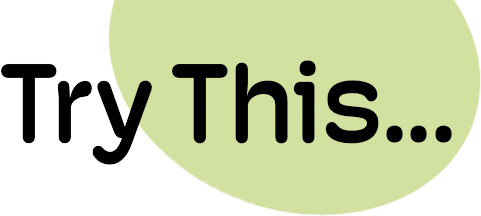‘Try This…’ is a book written to utilise the extraordinary power of stories to communicate and make knowledge memorable.
Stories are powerful contexts for learning.

Long before the invention of writing, humans communicated knowledge through the medium of storytelling. They wove information and cultural wisdom into narratives that could be memorised and passed down from one generation to the next. As time progressed, the creation of these narratives had a profound impact on the human brain. Stories, as described by Daniel Willingham, became “psychologically privileged[1],” possessing a unique capacity to form connections and transcend the usual limitations of human memory.
This remarkable power of stories works through three key mechanisms:
Firstly, stories organise information into memorable narratives, seamlessly incorporating characters, settings, events, and tension. These storylines function like pathways along which the mind can travel navigating between one piece of information and the next, forming connections and enhancing memory.
Secondly, stories affect the emotions, forming deep connections between information and feelings such as excitement, fear, and satisfaction. When humans recall strong emotions, they remember the context and, through association, the events and information happening at the time.
Thirdly, stories engage the imagination, a kind of superpower that empowers human beings to transcend the limits of the world around them. Imagination enables us to envision ourselves as anyone, anywhere, at any time, doing anything. In this sense, stories represent the most potent resource for learning – they are not only freely accessible and boundlessly available but also universally familiar. We use them routinely when we read novels, watch TV dramas, or enjoy cinematic experiences. Stories are woven into children’s play, shape our interactions with the world, and help us make sense of people and events.
The aim of the activities in ‘Try This…‘ is to harness the immense potential of stories and employ them as meaningful contexts for cross-curricular study. These activities are written to be accessible and easy to use, without the need for deep knowledge of drama conventions or access to expensive resources. They can take place in any classroom, with minimal need for preparation or planning. The most important thing is to be ready to use your imagination and encourage your students to do the same.
Some examples of keys using stories as contexts in ‘Try This...’
Key 21: Encounter Someone
Key 4: Step into History

[1] ‘Ask the Cognitive Scientist: The Privileged Status of Story’ D. Willingham https://kbsgk12project.kbs.msu.edu/wp-content/uploads/2011/02/Ask-the-Cognitive-Scientist.pdf
Ref. John Everett Millais (1829-1896) – The Boyhood of Raleigh – N01691 – National Gallery


